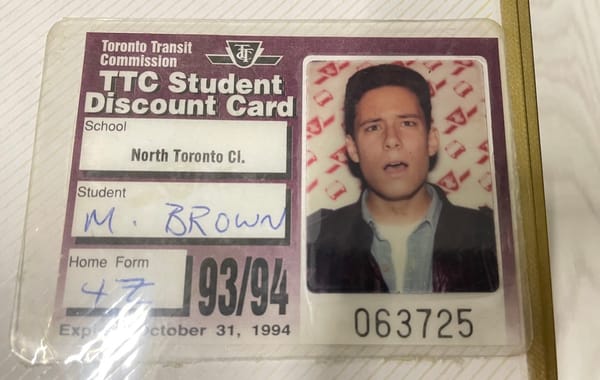Rhythm (I Ain’t Got None)
Plus, further adventures at the TIFF
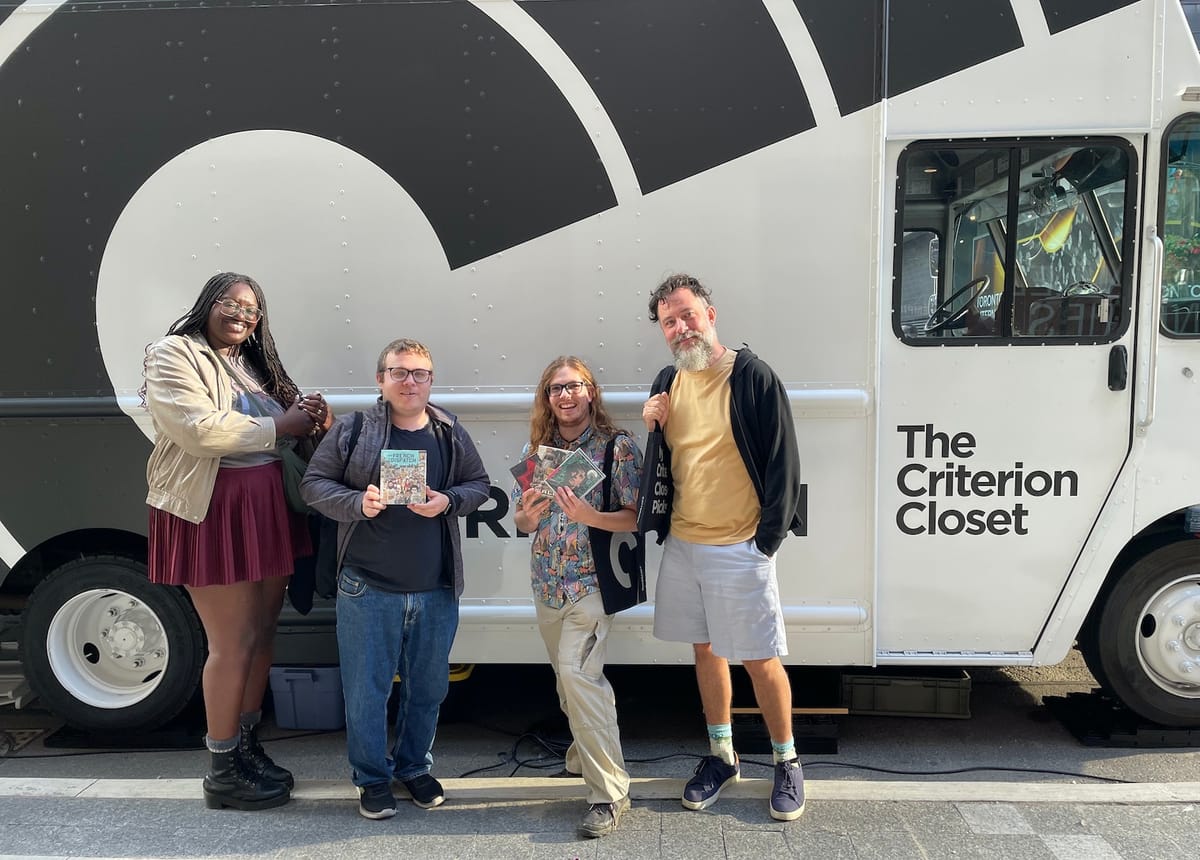
I’ve been having trouble writing the last bit, which is a thing that happens, but is one which (I think) I don’t mention much in here, because what is social media for if not pretending that Everything Is Going Great.
But with a month or so to go before some submission deadlines for which I wanted to apply Enneaka, I went down a bit of a rabbit hole on the (then-)current draft and realized there was more I wanted to do with that work of queer fiction for adult readers, that made it less a strange autofiction project I did in the summer three years ago and more of something, I dunno, bigger. With something in it that I needed to say, but had not found the full flower of its expression. And then… it got hard.
Which, like I said, I know is just the thing that happens with writing. (Ann Friedman’s post last week was what made me sit up and say, “oh right. This is normal.”)
Anyway, while all that is going on, I’m also still working on the third draft of the Safecrackers screenplay. Maybe you folks can help me with a problem that I’m not having yet, but will be having soon, which is: finalizing the rhythm of the dialogue.
I am not a rhythmic person. I can’t dance. This only matters because great dialogue has rhythm, has meter; it has a cadence to it that can either be stylish (rat a tat TAT!) or invisible but either way, it has some kind of an artfulness to the way it rolls off the tongue.
One of the recent screenplays that really got my antennae up on the rhythm of dialogue — as written, as performed, as edited — was Mike Leigh’s script for Hard Truths. (This is what I mean when I say the cadence can be invisible; it doesn’t have to be showy to have a distinct cadence). The whole movie’s worth a watch/listen, but here’s a representative page:
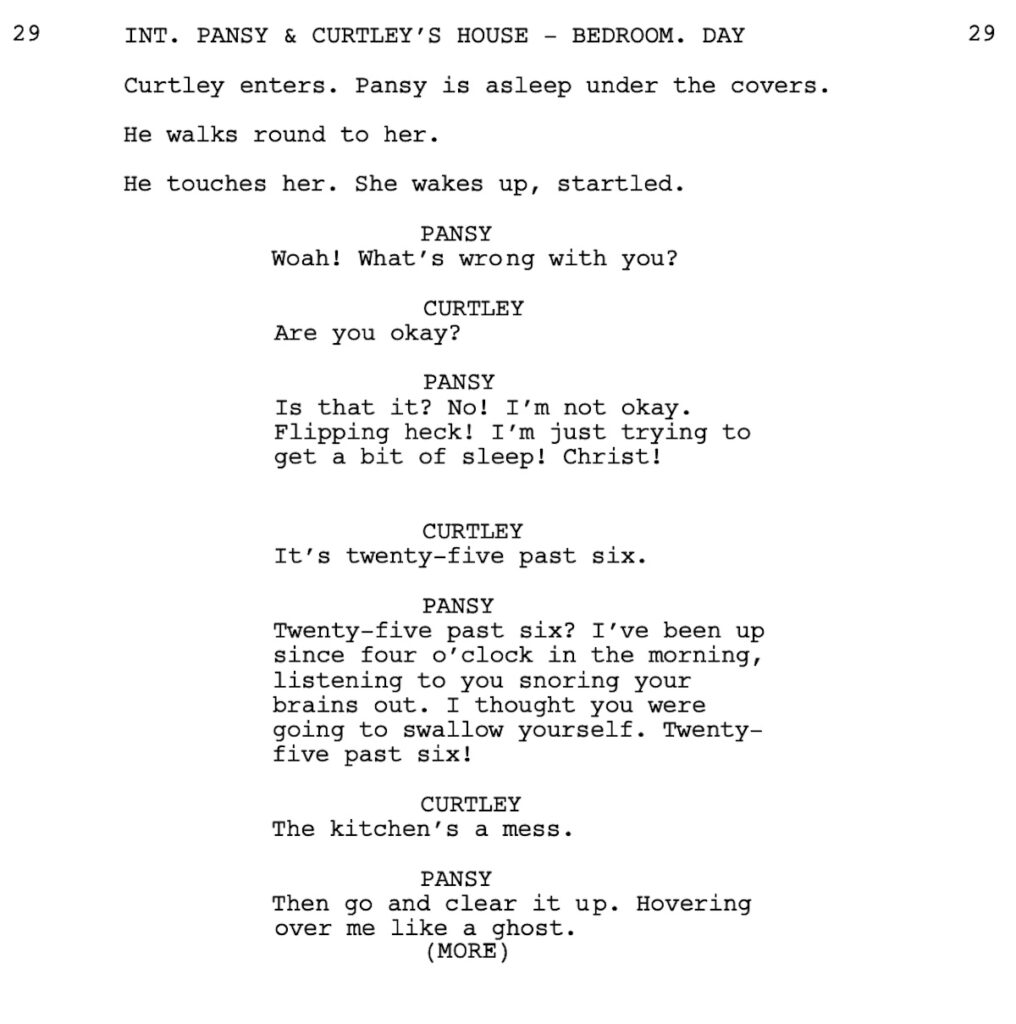
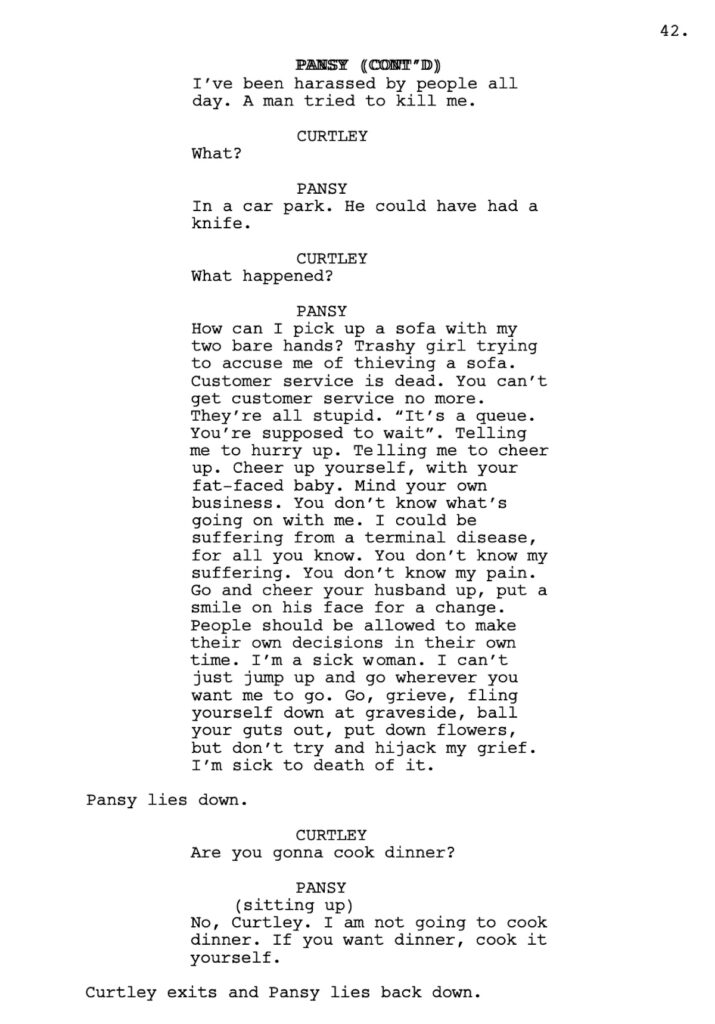
Or the Knives Out movies; don’t get me started. I saw Wake Up Dead Man on Saturday and while it’s lengthy and complex, it never, ever, loses its sense of beat, meter and pause in the spoken-word moments. I don’t have a copy of the screenplay for that yet, but you can see a similar example in Glass Onion:
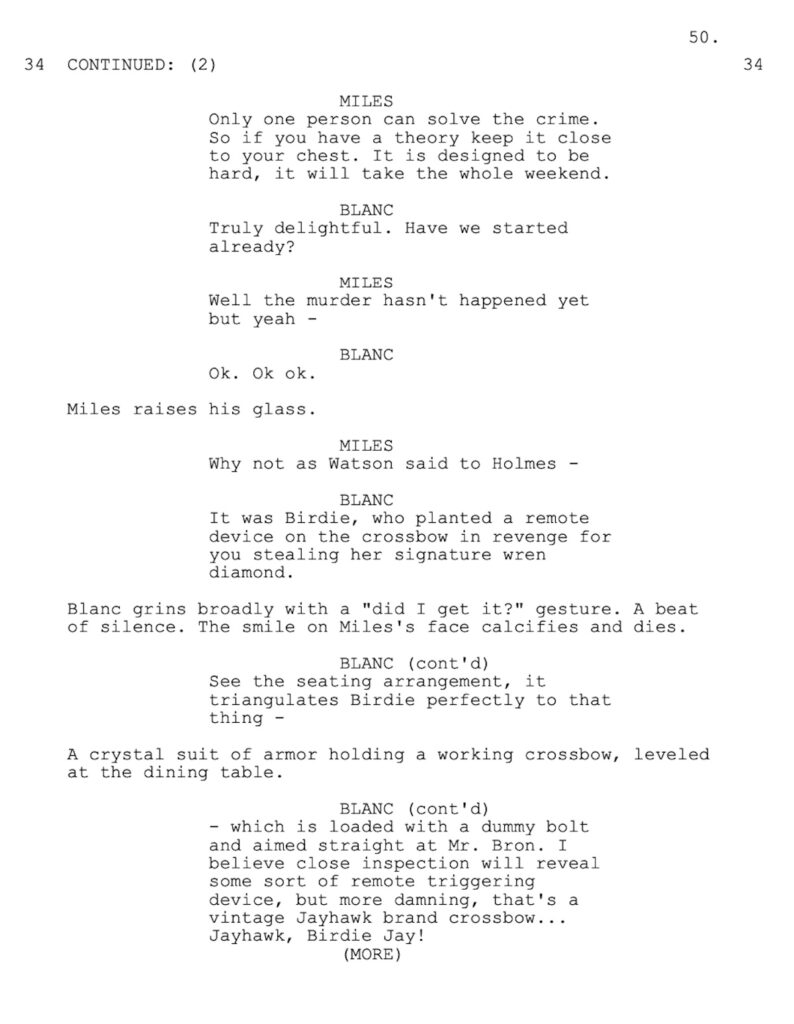
(Here.)
These lines don’t just create pacing and natural rises and falls in the scenes in which they are contained; they are also (for my money) clear prisms of information, which reminds me of that thing I wrote last month about bumps.
When it comes to dialogue, though, I have no idea how to (consciously) do that. I can recognize when a line I’ve written has the right sort of zazz to it, but no idea how to apply that thinking proactively.
Perhaps more importantly: I don’t know how to assess my own lines without hearing the way I would deliver it in my own head, which (of course) sounds perfect to me, and is (of course) not a good measure of a line’s perfection.
So, open call to the writers in the room (not just screenwriters! It applies broadly!): how do you think about rhythm, in your spoken words, written words, and elsewhere? Answer in the comments, please.
You have to be a subscriber to this newsletter to leave comments. But you probably want to do that anyway (because it's so cool)
The September Festival, Part II
I had a marvelous weekend on Festival Street. While the word amongst the cognoscenti might be that TIFF 50 feels a bit “muted” compared to past festivals, I have to say, that feeling is nowhere to be found among the only people I hang out with at the festival: the actual people going to the festival. I spent all day Friday in line for the Criterion Closet with three strangers who became comrades in arms; and Saturday night on the balcony for Wake Up Dead Man with people who were just as excited as me to be there. Both experiences reminded me forcefully what all of this/that is for.
Let’s take the examples individually.
Lining up all day for the Criterion Closet — or rather, the way some people react to same — is instructive. Yes: I live in Toronto and am not a moron. I know that Bay Street Video exists. As such, the purpose of the exercise cannot be to buy DVDs, or even to see inside a camper van with (almost) the entire Criterion Collection in it.
While there’s a bit of unavoidable social media influencer pixie-dust spackled over the whole thing, I think the purpose of the exercise was actually… the exercise itself. Being there, doing that. Spending time with them. With the other people who were doing it with me; with the lovely Criterion Collection staffers who kept us fed and watered and (in one case) sheltered and (in all cases) in good spirits as we made this strange little cinematic pilgrimage together. It felt holy, and it meant much more than my three shaking minutes making my actual, official Closet Picks.
I realized later that similar thinking applies to paying top dollar to see a movie that’s going to be on Netflix in a couple of months, or any TIFF movie that’s “coming out soon anyway. Hell, even I have decried (in these very pages!) the waning pull of the cinema with all its inconveniences and disappointments, vs. just getting a pristine experience with a movie in my own time, in my own way. So I get it. But like “why would you line up all day to buy DVDs?,” the “why would you go to TIFF to see a movie you could see in a regular theatre?” thing just comes at the whole argument wrong.
I’ve argued before that few movies play better with an audience than Rian Johnson’s; Wake Up Dead Man was of course no exception, but I realized on Saturday that the experience I’m describing begins a long time before the movie rolls. The girl next to me had somehow gotten her mother all the way to their seats without her finding out what movie they were there to see, as a surprise. The fellow next to me turned out to be an old co-worker, who remembered me warmly (and smelled wonderful). A lady down the row had done the same thing I did — paid top dollar, felt silly about it, then owned it — and we high-fived each other’s mutual zest for the moment. And on the way out, the non-binary filmmaker behind me said they loved my chaotic sprigs of hair — the first time in my life when that really made me feel good instead of weird — and I tittered about it all the way home.
I’ll watch Wake Up Dead Man a few more times in my life and probably all of them will be at home; but the reason I love that movie will always be, because I saw it that night, at TIFF. Which is a thing that happens.
Actually, on this subject: Here’s a great post from David Demchuk, re: movies you only need to see / can see / should see once. It’s a great exercise / thought experiment for film fans on its own terms.
But naturally, a lot of my picks for this list come out of TIFF. In the early years, that might have been because, having seen them once, there was no other way to see them a second time. Now that we live in Everything Available All At Once, though, something foundational about the habit remains: that sepulchral feeling that, whatever one’s experience was the first time one saw something, it simply cannot be topped.
A few examples:
- The People’s Joker, TIFF ’22: Incredibly, this actually secured release eventually and you can even buy it (on VHS, too!) at Bay Street Video. But I ain’t gonna. When it felt like People’s Joker was a one-time, had-to-be-there moment, it also felt like this piece of renegade art at its purest, and a huge fuck-you to the entire capitalist hegemony that has taken over American cinema.
- Enter the Void, TIFF ’09: I’ll probably never have a more transcendent experience watching a movie than I did this random Tuesday in September, in the midst of a death in the family, a relationship crisis, and all the other usual shit that was fucking me up and would continue to do so for another decade or so. The movie’s plenty available, there’s even a 4K of it; I knew then, and I continue to know now, that I’ll never watch this movie again.
- Shinboru (Symbol), TIFF ’09: I actually bought an out-of-region blu-ray without English subtitles of this thing after I saw it, so much did I love it. (I also own the pyjamas, c/o Colin Geddes.) But I’m pretty glad I never made use of that blu-ray. I don’t know if this was the best Midnight Madness screening I ever attended or even my favourite movie that ever played Midnight Madness; but wow, it was special, and singular.
Speaking of which:
- Borat: Cultural Learnings of America for Make Benefit Glorious Nation of Kazakhstan (TIFF ’06): Here’s another one where I bought the DVD and actually watched the DVD, and there was a very good reason: notoriously, the reel (that’s part of an old presentation process they called “Film,” kids) broke at around the 20-minute mark on this opening night screening at TIFF, and no one — not even documentary director Michael Moore, who was in the audience, and tried — could repair the projector. I mention this not because the evening was so special (it was) but because I can say quite confidently and without malice that the best way to see Borat is to watch the first 20 minutes and then have the reel break. It’s enough to get the beak wet and fire the imagination, and then leave the rest to the weird cinema that exists in real-time only, and can never be put on DVD.
A few more things before you go:
- Here’s a piece about everyone’s favourite topic, the destruction of the world (education, in this case) by A.I., written in this case by a clever high-schooler who’s witnessing it firsthand. Among many, many other things, I wonder if building an education system around achievement — yes, I know that good grades are a representation (theoretically) of something else; but I doubt children intuitively understand that when a bad report card comes home — isn’t at least partially responsible for a century of kids finding “hacks” to that achievement, of which A.I. is only the ne plus ultra. (The Atlantic)
- I extol my brother-in-arms Malcolm's newsletter plenty in these pages, but this one really hit home for me. (Strategy for Life)
- Or if you want to get a little witchy with it, here's Things To Do To Be Ungovernable. (Christopher Penczak)
- Elle Gordon has something to say to her bully, which felt very real and present to me re: some of the boys from my past whose impact on my sexuality remains very present, very close, and (to them, I’d assume) entirely unknown. (The Sun)




